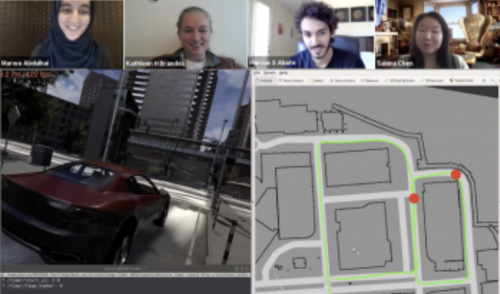Online Robot Race with Photorealistic Simulator

Every spring, the basement of the Ray and Maria Stata Center becomes a racetrack for tiny self-driving cars that tear through the halls one by one during this annual MIT autonomous racing competition. The competition is the final project for Course 6.141/16.405 (Robotics: Science and Systems). With campus evacuated this spring due to the Covid-19 pandemic, however, not a single robotic car burned rubber in the Stata Center basement. Instead, a new online race was on based on a photorealistic simulator. With this simulator, students could watch as their self-driving cars snaked around a flat map, like a car depicted by a dot moving along a GPS navigation system. The racing competition needed to be noisy. Realistic. Exciting. The dynamics of the car needed to be nearly as complex as the robotic cars the students had planned to use.

Although this shift in the final project somewhat changed the takeaways from the course, Carlone says the experience will still advance algorithmic skills for students working on robotics, as well as introducing them to the intensity of communication required to work effectively as remote teams. “Many robotics groups are doing research using photorealistic simulation, because you can test conditions that you cannot test on the real robot,” he says. Co-instructor Roy says it worked so well, the new simulator might become a permanent feature of the course — not to replace the physical race, but as an extra element. “The robotics experience was good,” Carlone says of the 2020 race, but still: “The human experience is, of course, different.”
For more, please click here.
